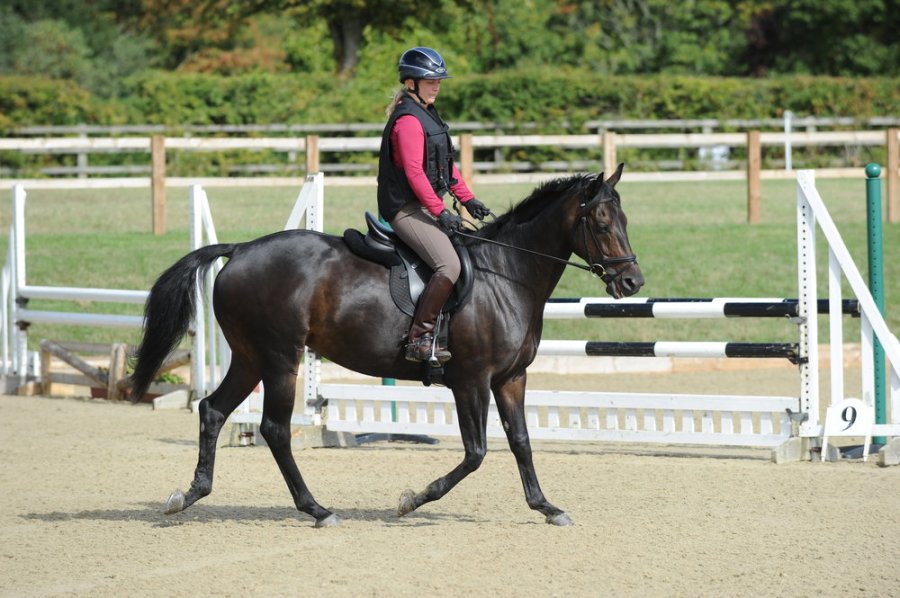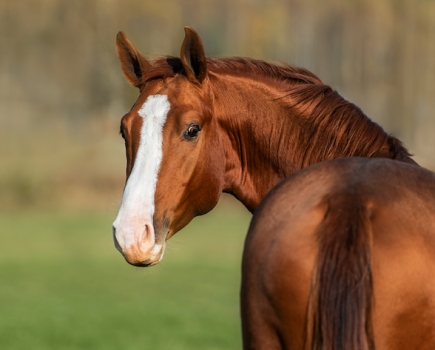For many horses being tense is simply part of their DNA, and there’s every chance they’ll be this way well into old age.
Event rider and coach Victoria Bax specialises in training ex-racehorses. Over the years, Victoria has developed a schooling system that works every time.
Victoria says, “The key to owning a tense horse is having a good relationship. He needs to learn to trust you, so be prepared to develop a consistent approach.”
Start with the warm up
It’s important to spend lots of time warming up if your horse is the tense or hot type. Don’t ask too much too soon.
- Once settled in the saddle, calmly ask your horse to walk on while giving him a longer (but not loose) rein.
- Go large around the school allowing him to take in the surroundings without interfering. Stay nice and relaxed yourself – any tension will transfer to your horse.
- Ride big circles without putting any pressure on your horse. If you ride small circles too soon, there’s a chance he’ll get stressed. Make it easy for him.
- Continue in walk and only take up the reins when he starts to relax. Listen for him taking a deep breath and watch his ears softening. Don’t make a grab for the reins when you start to take up the contact – just gather then up a little.
Perseverance pays off
You have to progress slowly with a tense horse, but your patience will be worth it. If you put all of the foundations in place at the beginning of every session, he’ll work better.
- Take up a little more contact, keeping things slow and steady. You still haven’t taken up a full contact at this point.
- Now, when you come to a corner, ask your horse to look around it, turning his head, neck and body. Use your inside leg and an open inside rein to help.
- If he accepts your direction in the corners, move into trot, the slower the better. Ride big figures of eight, working to keep him calm on the change of direction.
- To prevent him from rushing, count out load the rhythm you want from the trot – your horse will alter his pace to match.
- Ride a series of large circles in different parts of the arena.
If your horse feels ready to then you can start to work in canter, again keeping the pressure off. Use simple transitions to help with engagement.
TOP TIP
Ride in a neckstrap – it gives you something to hang on to without you having to grab at your horse’s mouth, and also helps with contact.
Don’t miss the latest issue of Your Horse Magazine, jam-packed with training and veterinary advice, horse-care tips and the latest equestrian products available on shop shelves, on sale now.








